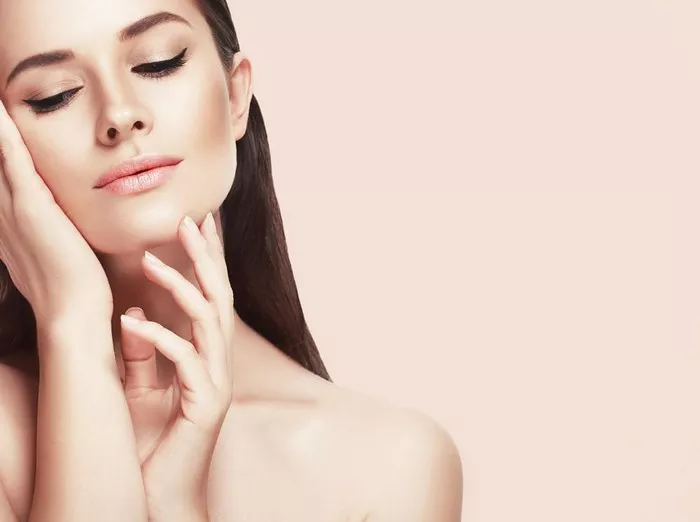Deep nasolabial folds, also known as smile lines or laugh lines, are the lines that run from the sides of the nose to the corners of the mouth. These folds can become more pronounced with age, and they are a common concern for many people. In this article, we will explore the causes of deep nasolabial folds and discuss some of the treatment options available.
The Anatomy of Nasolabial Folds
Before we dive into the causes of deep nasolabial folds, it’s important to understand the anatomy of the face. The skin on our face is made up of several layers, including the epidermis, dermis, and subcutaneous tissue. The dermis is the layer of skin that contains collagen and elastin fibers, which give the skin its elasticity and firmness.
The nasolabial folds are formed by a combination of factors, including the muscles in the face, the fat pads beneath the skin, and the skin’s natural aging process. When we smile or laugh, the muscles around the mouth and nose contract, causing the skin to fold and crease. Over time, as the skin loses its elasticity and the fat pads beneath the skin begin to shrink, these folds can become more pronounced.
Causes of Deep Nasolabial Folds
There are several factors that can contribute to the development of deep nasolabial folds. Some of the most common causes include:
Aging: As we age, our skin loses its elasticity and firmness, which can cause wrinkles and folds to become more pronounced. This is a natural part of the aging process and cannot be avoided entirely.
Genetics: Some people may be more prone to developing deep nasolabial folds due to their genetics. If your parents or other family members have deep nasolabial folds, you may be more likely to develop them as well.
Sun exposure: Exposure to the sun’s UV rays can damage the skin and accelerate the aging process. Over time, this can lead to the development of deep nasolabial folds.
Smoking: Smoking can also accelerate the aging process and cause the skin to lose its elasticity. This can make wrinkles and folds, including the nasolabial folds, more pronounced.
Weight loss: Losing a significant amount of weight can cause the fat pads beneath the skin to shrink, which can make nasolabial folds more pronounced.
Treatment Options for Deep Nasolabial Folds
If you are concerned about the appearance of deep nasolabial folds, there are several treatment options available. Some of the most common treatments include:
Dermal fillers: Dermal fillers, such as hyaluronic acid or collagen, can be injected into the skin to plump up the area and reduce the appearance of deep nasolabial folds.
Botox: Botox injections can be used to relax the muscles around the mouth and nose, which can reduce the appearance of deep nasolabial folds.
Laser resurfacing: Laser resurfacing can be used to remove the top layer of skin and stimulate collagen production, which can help reduce the appearance of deep nasolabial folds.
Chemical peels: Chemical peels can be used to remove the top layer of skin and stimulate collagen production, which can help reduce the appearance of deep nasolabial folds.
Surgery: In some cases, surgery may be necessary to remove excess skin and fat and tighten the underlying muscles. This is typically only recommended for severe cases of deep nasolabial folds.
Conclusion
Deep nasolabial folds are a common concern for many people, but they can be treated with a variety of options. If you are concerned about the appearance of your nasolabial folds, it’s important to speak with a qualified medical professional to determine the best course of treatment for your individual needs. By understanding the causes of deep nasolabial folds and the treatment options available, you can take steps to achieve a more youthful and refreshed appearance.
FAQs
1. How do you get rid of deep nasolabial folds?
Several cosmetic treatments can help reduce the appearance of deep nasolabial folds, including dermal fillers, laser resurfacing, chemical peels, and surgical procedures such as a facelift. Dermal fillers, such as hyaluronic acid-based injections, are commonly used to add volume to the area and smooth out wrinkles. Laser resurfacing and chemical peels can improve skin texture and stimulate collagen production, while surgical interventions aim to lift and tighten sagging skin.
2. At what age do nasolabial folds appear?
Nasolabial folds, also known as smile lines or laugh lines, typically start to become more prominent as people age, usually appearing in their late 20s to early 30s. However, factors such as genetics, sun exposure, smoking, and repetitive facial expressions can accelerate the development of nasolabial folds, causing them to appear earlier in some individuals.
3. Can nasolabial folds be reversed naturally?
While natural methods may help improve the appearance of nasolabial folds to some extent, reversing them entirely without cosmetic intervention is challenging. Practices such as maintaining a healthy lifestyle, staying hydrated, protecting the skin from sun damage, and using skincare products containing retinoids or peptides may help minimize the appearance of nasolabial folds and prevent further worsening.
4. Why do some people have nasolabial folds?
Nasolabial folds develop as a natural part of the aging process due to factors such as loss of skin elasticity, reduced collagen production, and gravitational effects on facial tissues. Additionally, genetics, sun exposure, smoking, repetitive facial movements, and lifestyle habits can contribute to the formation of nasolabial folds, making them more prominent in some individuals than others.


